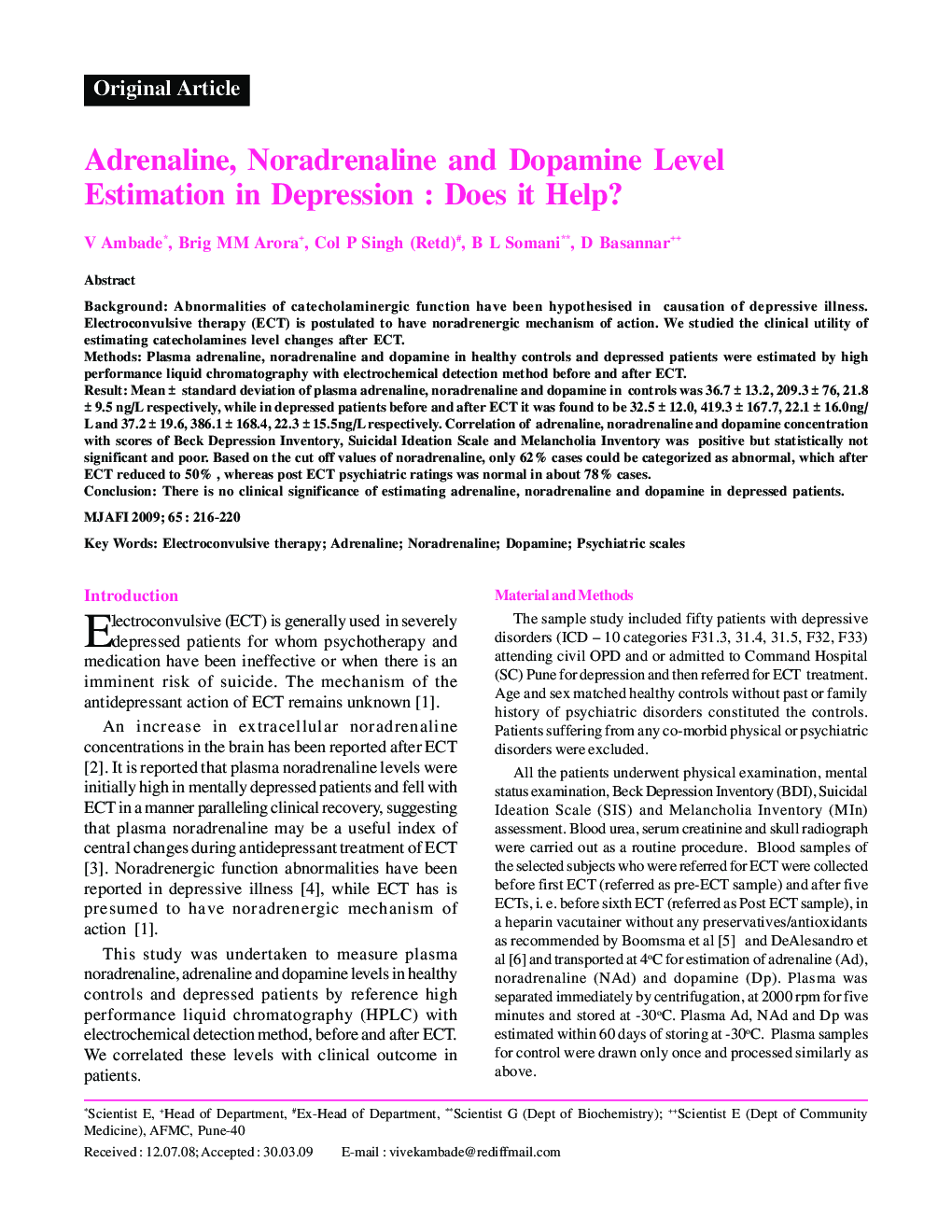| Article ID | Journal | Published Year | Pages | File Type |
|---|---|---|---|---|
| 3161612 | Medical Journal Armed Forces India | 2009 | 5 Pages |
BackgroundAbnormalities of catecholaminergic function have been hypothesised in causation of depressive illness. Electroconvulsive therapy (ECT) is postulated to have noradrenergic mechanism of action. We studied the clinical utility of estimating catecholamines level changes after ECT.MethodsPlasma adrenaline, noradrenaline and dopamine in healthy controls and depressed patients were estimated by high performance liquid chromatography with electrochemical detection method before and after ECT.ResultMean ± standard deviation of plasma adrenaline, noradrenaline and dopamine in controls was 36.7 ± 13.2, 209.3 ± 76, 21.8 ± 9.5 ng/L respectively, while in depressed patients before and after ECT it was found to be 32.5 ± 12.0, 419.3 ± 167.7, 22.1 ± 16.0ng/ L and 37.2 ± 19.6, 386.1 ± 168.4, 22.3 ± 15.5ng/L respectively. Correlation of adrenaline, noradrenaline and dopamine concentration with scores of Beck Depression Inventory, Suicidal Ideation Scale and Melancholia Inventory was positive but statistically not significant and poor. Based on the cut off values of noradrenaline, only 62% cases could be categorized as abnormal, which after ECT reduced to 50%, whereas post ECT psychiatric ratings was normal in about 78% cases.ConclusionThere is no clinical significance of estimating adrenaline, noradrenaline and dopamine in depressed patients.
